Everything is simple and beautiful and you are
my friend
Michala Paludan
Mia Edelgart & Sebastian Hedevang
Spaghetti Clurb
Violetta Parra
Paul McCarthy
Thomas Vinding & Finn Bentzen
Tiddy

an exhibition for kids
This show was innitally made for Arthub Copenhagens exhibition Thoravej 29,
17 September – 31 October
2021
And subsequently shown in two parts - one at HFKD in Holsterbro and one at Institut Funder Bakke.
17th December - 5th March
2021/22
Rul ned for dansk
Stimulation of the senses
In the nineteen-seventies the term Snoezelen was coined by the dutch pedagogues Jan Hulsegger and Ad Verheul. This word is a contraction of the Dutch words ”snuffelen” (to sniff) and “dozelen” (to daze) and is the term for a room arranged with the sole purpose of stimulating the senses.
Snoezelen was initially, and still functions as such, a way to create activities and dreamlike sensory experiences for severely disabled people.
There was never an underlying therapeutic aim or goal for the Snoezelen room except to calm the senses. These simulations are produced in a variety of ways often using lights, smells and various tactile sensations with the best known one being the ball bath.
The ball bath has since been seeped into society at large and can now be enjoyed at such places as - soft playgrounds - IKEA - McDonalds and other venues specialized in the stimulation of the human senses.
The underlying point here is that there is a strangely stimulating correlation between the unapologetic focus on pure sensory experience with no additional aim for therapeutic progress in the Snoezelen philosophy and the similar but perversely decadent appreciation of western art for the sake of western art.
To point is to name - the pig - two faced
The Austrian Philosopher Ludwig Wittgenstein once mentioned - that as infants when acquiring language we do so by our parents or teachers pointing at an object while they simultaneously produce the sound of the name given to that object. The philosopher then moves on to suggest that by growing up in a social construct that utilises their fingers to point, it will be impossible for anyone raised in such a regime to comprehend a language of a social construct that instead of their fingers uses their elbow as the tool for pointing. Whether or not the philosopher has a point in people being incapable of comprehending each other depending on the use of either finger or elbow as a tool for pointing, is here to be left unresolved.
But the trinity or Bermuda triangle of pointing to an image while producing the accompanying sound has in all sorts of ways prevailed with an iconic manifestation being the children's picture books which in Danish is known as ”pegebøger” and literally translates into - pointing books.
Artist Michala Paludan (1983) will present a work for this exhibition informed by the 1975 Børnenes Billedbog (the Children’s Picture Book) by Danish photographer Jesper Høm and film producer and culinary entrepreneur Sven Grønløkke. This book follows the general example of the children’s picture book by presenting generic photos - without any text, instead there are photo after photo of animals - food - humans - plants - instruments etc. However initially mundane the book may appear, the poetics of the imagery, and the way that the montage unfolds suggests that a hidden narrative might be at play, but just as you think you have understood it, the volume of photographs (450 pages) and the eclectic way the montage has been constructed makes you lose track and the words of the writer Fred Moten resonates: I was gonna say there is something going on between em, but I can’t say that, there is just something going on!.
The series of photographs that Michala Paludan is presenting are made with the intention of being enjoyable for children to look at - much in the tradition of the Children’s Picture book - and could include, say a lovely looking apple, a funny machine or a sweet piggy. However they are two faced in more than one way. Take for example the very sweet piggy that appears in one of the photographs, this particular pig belongs to a breed of cloned pigs made for the purpose of understanding alzheimers.
Alzheimers is a disease that causes the brain to shrink and brain cells to die and is the most common cause for dementia. In other words, this little pig poses as a representation of cuteness, and - on a linguistic street level - the quite unlikely, but hopefully not impossible, scenario of a sweet policeman. This photograph also holds the promise of a future without loss of memory - while the notion of future and loss of memory, in and of itself is intriguing - this obviously also has as its natural consequence that the pig will lose its memory and will be reduced to pure instrument - “the pig is pure mechanics.” (Descarte)
The doubling of meaning at play in the photograph of the pig, is re-appearing in the other photographs presented - the apple is not only an image of an apple, the corn is not only an image of corn and so on. This strategy is further enforced and doubled by the montage the photographs create with one another. Michala Paludan is thus in these works somehow performing the very difficult task of simultaneously pointing with both her finger and her elbow.
Here come the revolutionist, the sociopathic bear, the painter and Tiddy
In 1962 the Chilean singer, artist and activist Violetta Parra (1939) wrote the song “Volver a Los 17” it was first recorded in 1966 when it was released on her last album Las últimas composiciones The song has gone on to become a classic among Latin American folk singers and was banned during the Augusto Pinochet dictatorship (1973-1990).
The song appeared with a new Danish lyric in 1982 on a Danish television show for children called ”Døren går op hvem kommer ind” the progenitor to what later became Bamses Billedbog (1983-2008).
Bamse, a bear, was not originally the main character but due to enormous popularity among kids, Bamse grew to become the main protagonist of its own show Bamses Billedbog (Bamses Picture Book).
Bamses Billedbog is a show about a teddy bear who lives alone in a small house “in the secret forest” and is a fairly happy go lucky kind of bear - as any good teddy bear would be; Bamse loves honey and Bamse loves his friends, but his friends also seems to have been hierarchically ordered in the mind of Bamse and Bamse suffers from a rather terrible and not very sympathetic inflatable sense of self-importance, especially when he is in the company of his friend the chicken”Kylling”.
When confronted with the question of whether you could give a clinical diagnosis to Bamse’s behavior, a psychologist pointed out that the megalomania from which Bamse seems to suffer, is no longer in use as a diagnosis in its own right, but is considered to be a potential byproduct or accompanying narcissistic personality disorder and sociopathy but, does also sometimes occur alongside schizophrenia - bipolar disorder and severe depression.
The “Painter” (1995) in Paul McCarthy’s (1945) video work of the same name, also suffers! This suffering is not named but throughout the film is very present. It is a kind of depression that somehow has accompanied the white male painter more or less continuously throughout the history of western art. This kind of depression often seems to enter the white male painter when he starts to compare his own work to the work of artist who came before - in the case of the “Painter” it is the work of Dutch-american painter Willelm de Kooning that haunts him and seems to bring the painter down.
As in the case with “Bamse” this state of mind can be seen as accompanied by the sensation of megalomania - the artist puts it upon himself to elevate himself into a state of greater originality and an even more unspoiled creativity than what came before - this obviously being a very difficult task - the artist constantly gets thrown off the horse and into the dark abyss of the ego.
Tiddy (DOB unknown) is a bear and she is in the show. Tiddy is an artist, she has seen many things and met a lot of people. On a day to day basis Tiddy is a part of the stage design of Nadia Tehran (1991). Tiddy does her struggling less on behalf of herself than Bamse and Paul McCarthy and could as such be said to be a more contemporary and inclusive bear artist than her male counterparts, and may also as such be slightly less caught up in questions relating to great originality and unspoiled creativity.
The conversation of great originality and unspoiled creativity that goes with the notion of the artist as a “free agent”, are qualities that have often been attributed to “The Child”. Thus this “childish” quality in expression has been very, very sought after by artists in the 20th century, with a prime example being the Danish painter and multi artist Asger Jorn.
When considering the method-acting performed by artists - in that there rarely is a real division between the worklife and the private life - it comes as no surprise that the desired qualities of un-spoiled creativity and un-accountability that seems to be the byproduct and the nobility mark of the “free agent”, has seeped into the domestic life as well. In the twenty five years that Bamses Billedbog aired, day by day, week by week you will have a very difficult time finding an episode where Bamse is actually doing the dishes.
The free agent won, not the singular free agent of course, but the idea of the free agent and this idea is championed around the globe and the long-lasting alliance with the unspoiled creativity is upheld in the many rooms devoted to children in various museums. Whether this is done for the sake of the idea, the sake of the social democratic emphasis on art and children or for the sake of the grand-parents money is yet to be coined.
“tragedy, ecstasy doom, and so on”
The London based children's art club - Spaghetti Clurb founded by Michael Crowe () - abandons the idea of un-spoiled creativity and so torments the mythology of the genius artist. The club escalates itself out of the division between high and low culture and turns towards an instrumentalisation of itself, using among other tools the “instruction piece” as a way to try and collectively answer some of life's more urgent and profound questions. In doing so they often stumble upon things so evident that the rest of us haven't noticed, for instance - Mark Rothko foreseeing the Copenhagen burger craze. The work Spaghetti Clurb is presenting in this show is a set of instruction pieces placed on tables around the show, that people of all ages are invited to fill in. These participatory (yes, the term is plagued) pieces will then continuously be installed in the show as they get filled in.
Funny Money
Money, in its physical form, is already funny. For instance take a Danish golden coin - the golden ones are better than the silver ones - on one side, you have an image of the symbolic power, the Regent, and on the other you will have the actual power of the coin, its value. The size oddly enough does not come into play, my much older brother once persuaded me into exchanging my 10 kroners to his 5 kroners with the argument that his coin was bigger than mine, I was then under the misconception that bigger was better, but I learned my lesson right there and then.
When moving further into money - away from the tactile sensation and great symbolism of the coin and into the way in which money for all practical purposes function in the digital realm - the fun simply just increases, and along with it, so does magic! An economist once said “the process by which banks create money is so simple that the mind is repelled”
It is the ease by which banks make money that makes the Greek economist Yanis Varoufakis compare the creation of money to black magic, and bankers to time travel agents. The only downside being that bankers might enable time traveling, but even if they would like to they can’t be everywhere at once.
For Everything is simple and beautiful and you are my friend Mia Edelgart (1984) & Sebastian Hedevang (1985) have created a sculptural work entitled “Hvad er Penge?” (What is Money?)
This work takes on the form of furniture made from plaster. The work is indifferent to whether it is a table or a chair or both. Like many other great designs that came before it, this furniture is much more interested in its kinship with other materials, in this case - sour cream and meringue, than in determining its specific use. Within the furniture pops out various Fisher Price cash registers who on their side contain different objects of value - currencies and or otherwise.
The work allows for the children to hang out around “Hvad er penge?” and exchange these objects in a manner that they see fit and just.
If the heaviness of capitalism and money is not equalled out by the works invitation to play, you may return to the furnitures emphasis on materialistic kinship and rely on that like when you during take off in a plane has succumbed to the devastating sight of the earth trivially divided into scarring yet visually stimulating small pieces of property, and you then break through the cloud carpet with its extraordinary resemblance to whipped cream on top of which the sun is bright as it ever will be!
with kindness
Andreas Führer
Institut Funder Bakke programmet 2022
er generøst støttet af
Knud Højgaards Fond
Augustinus Fonden
Statens Kunstfond
Det Obelske Familie Fond
Aage og Johanne Louise Hansens Fond

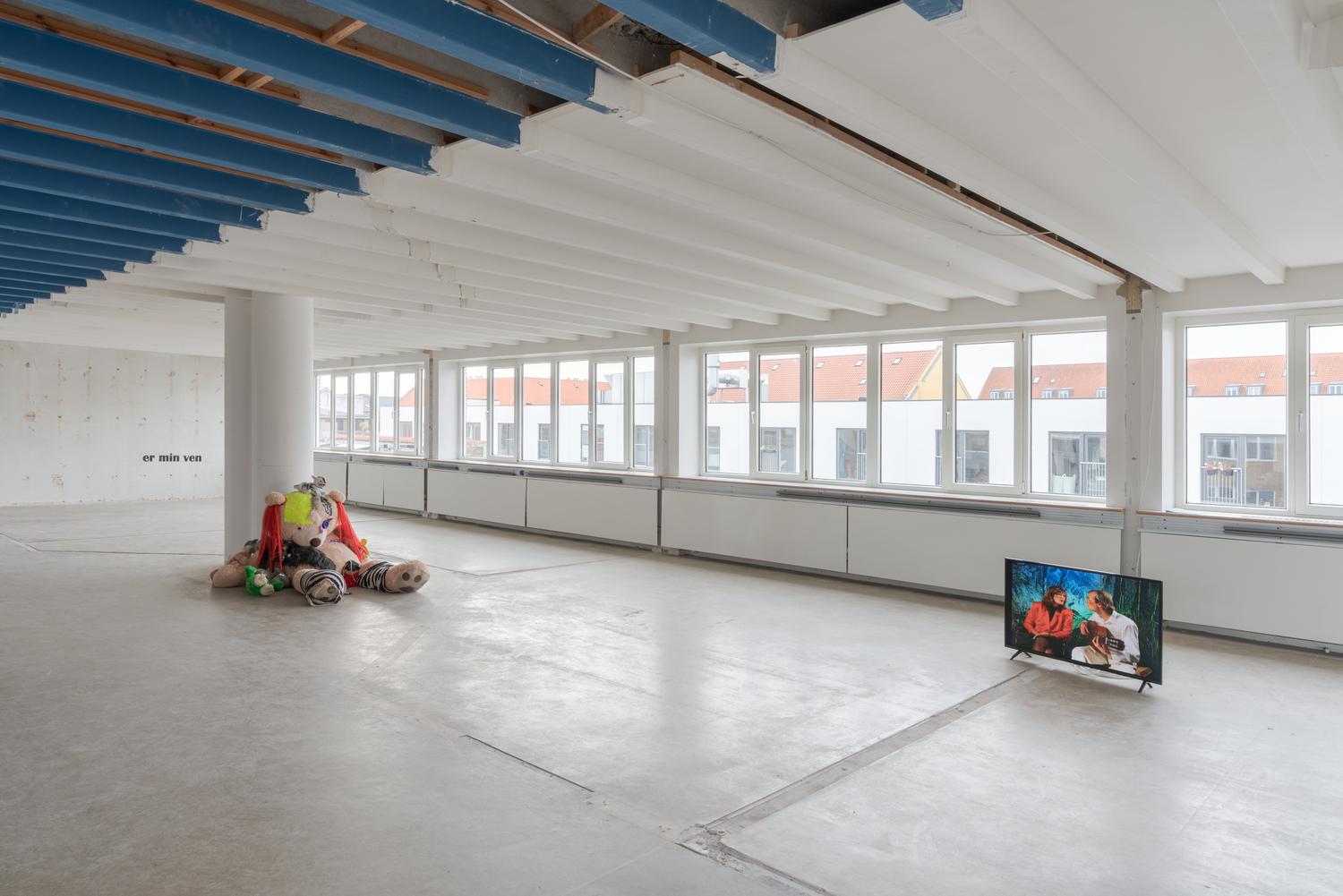

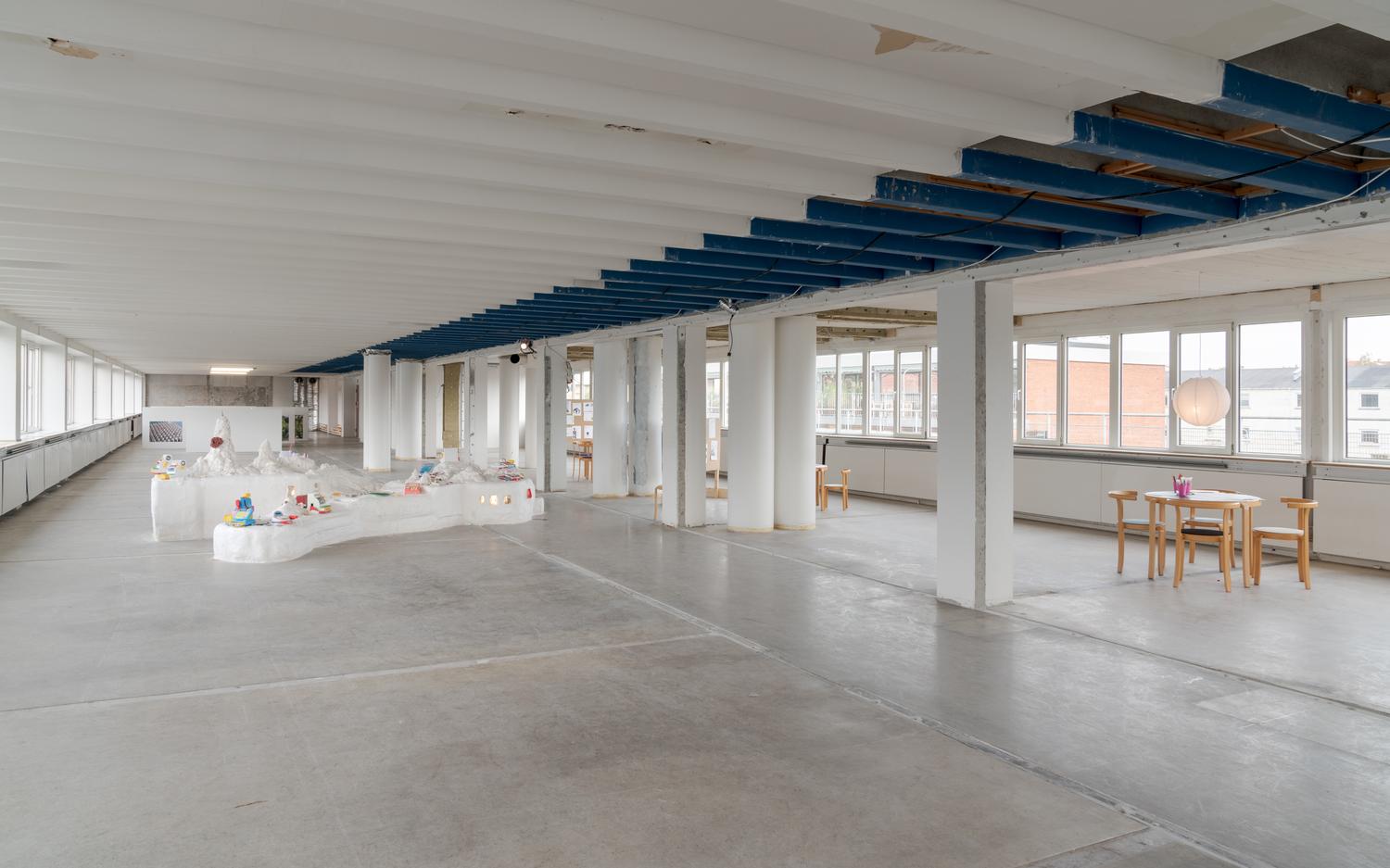
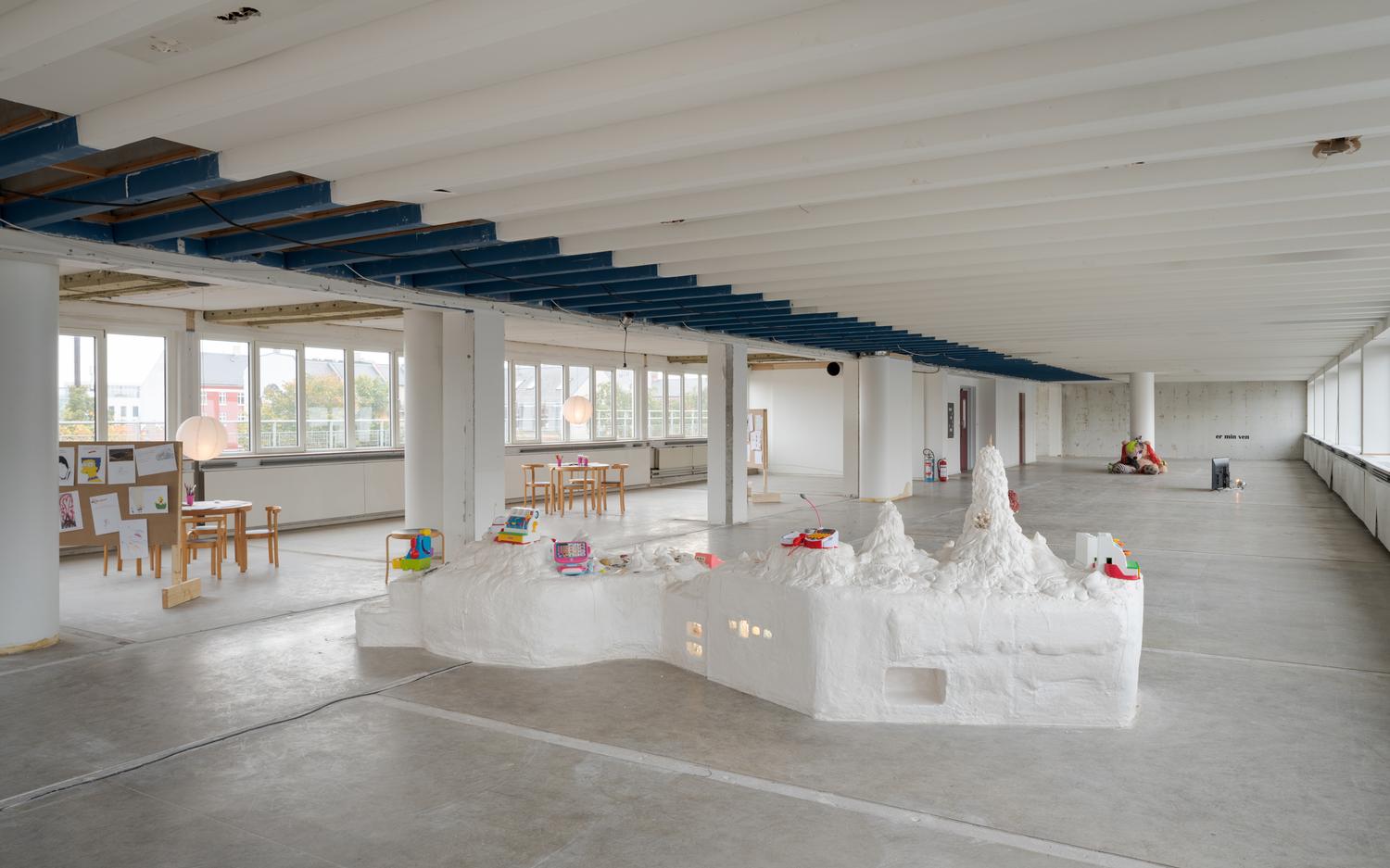
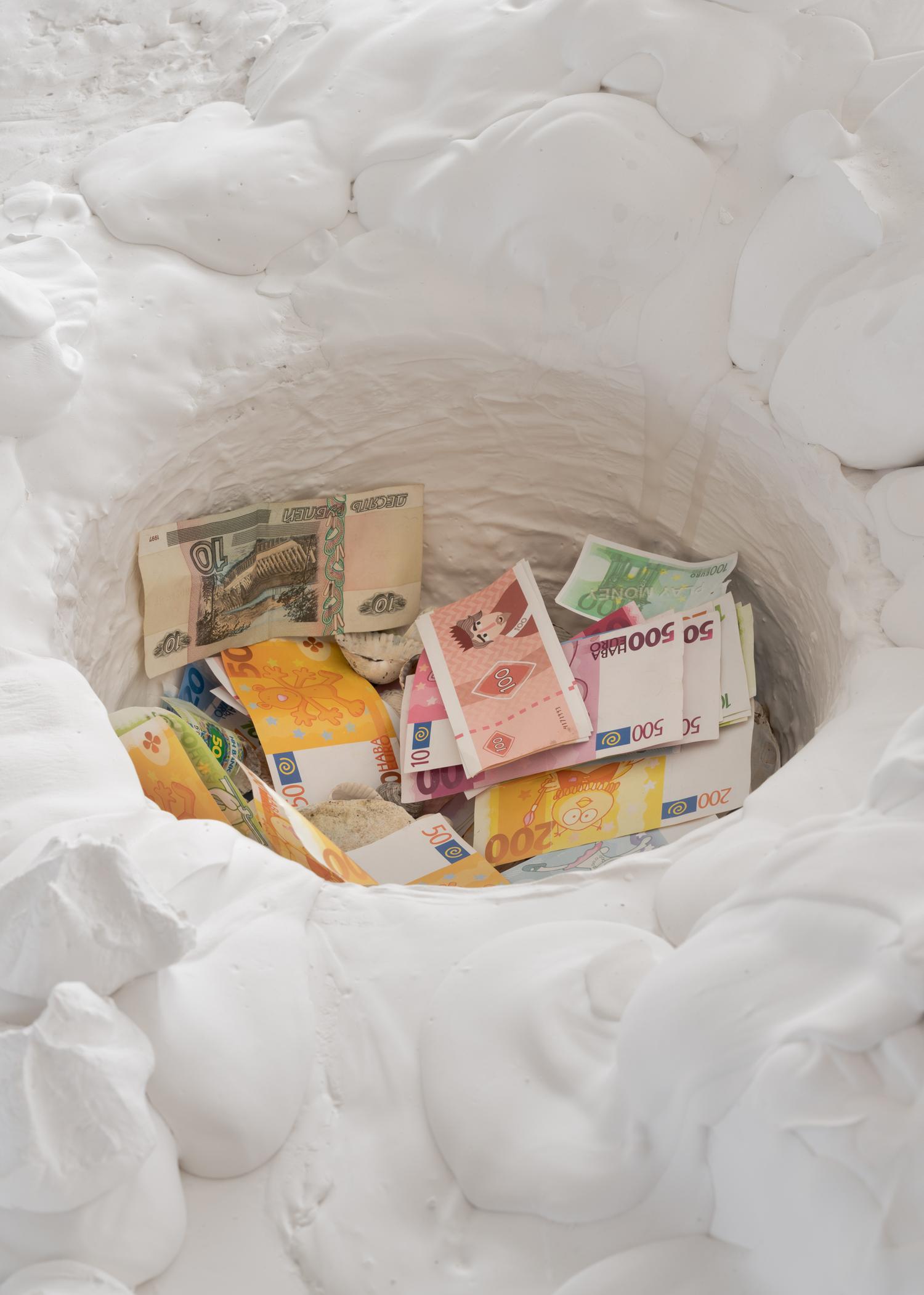
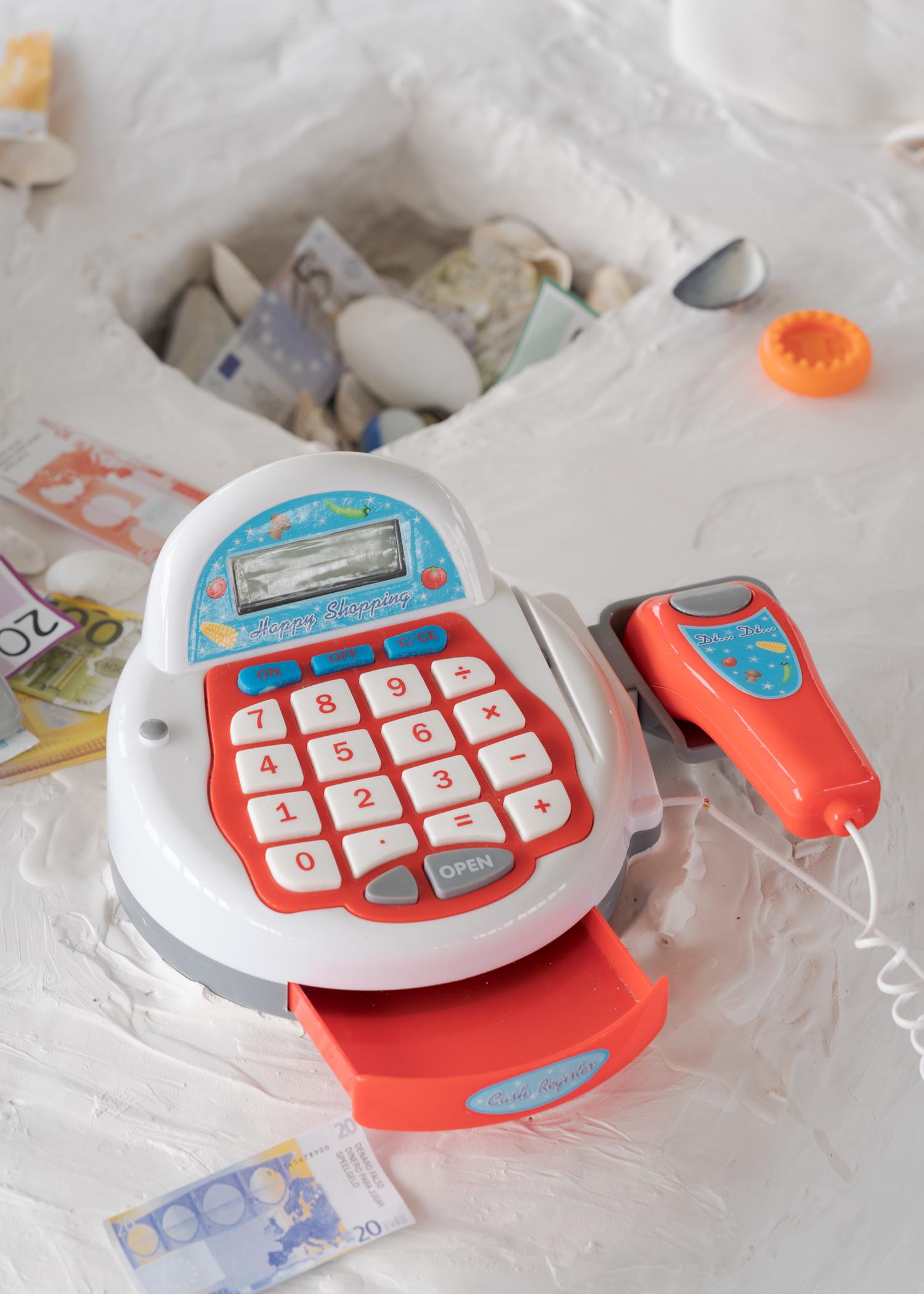
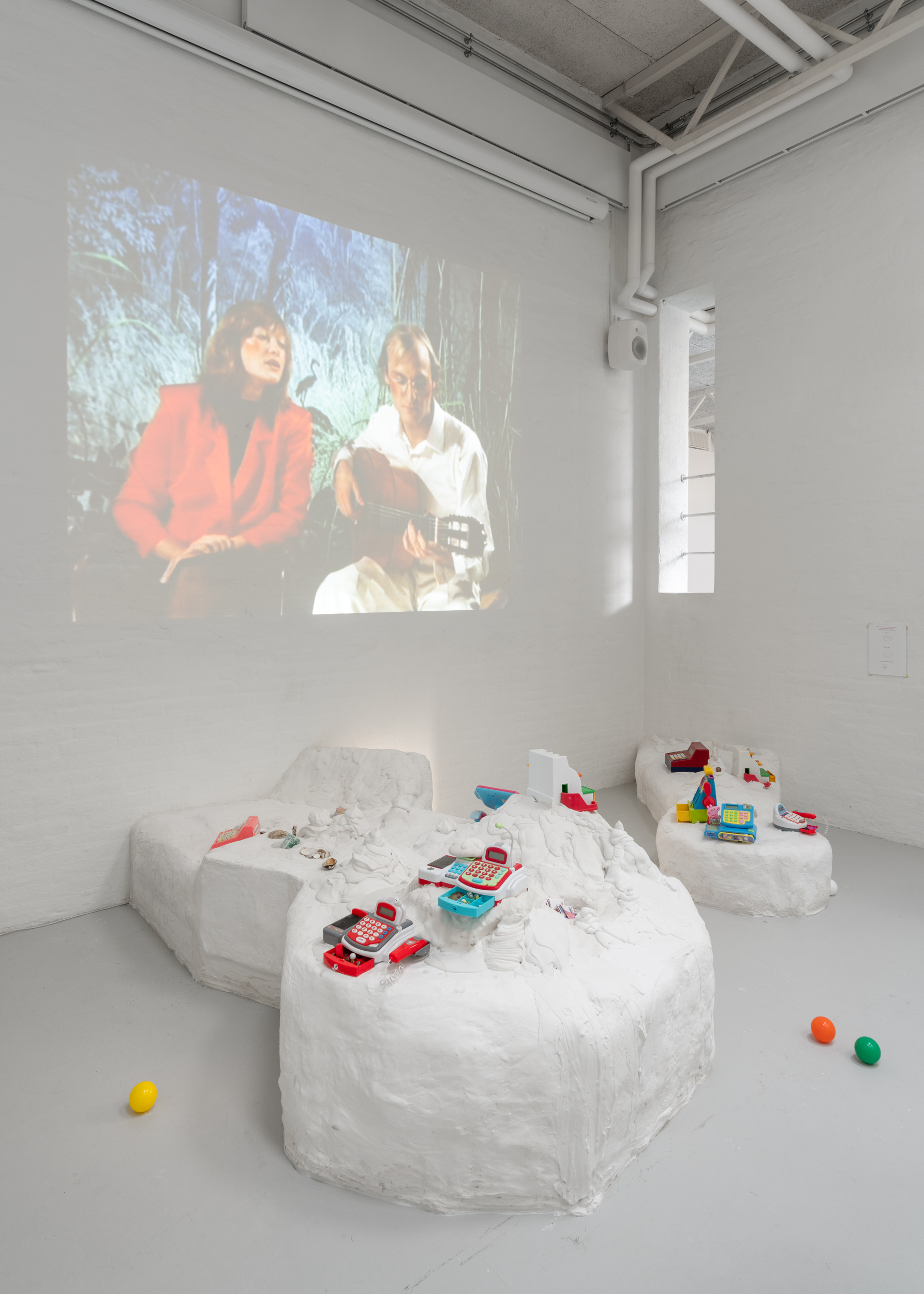

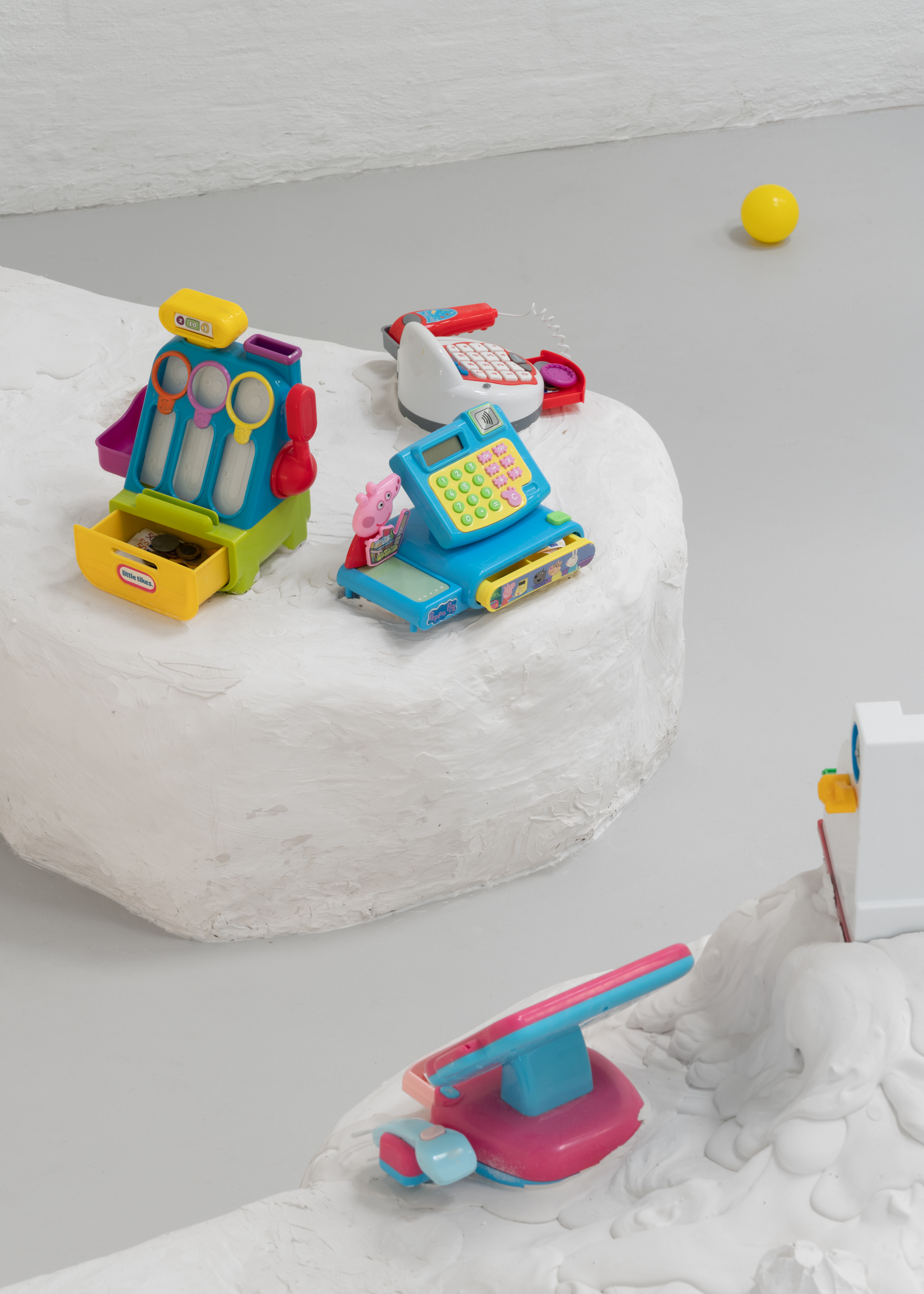
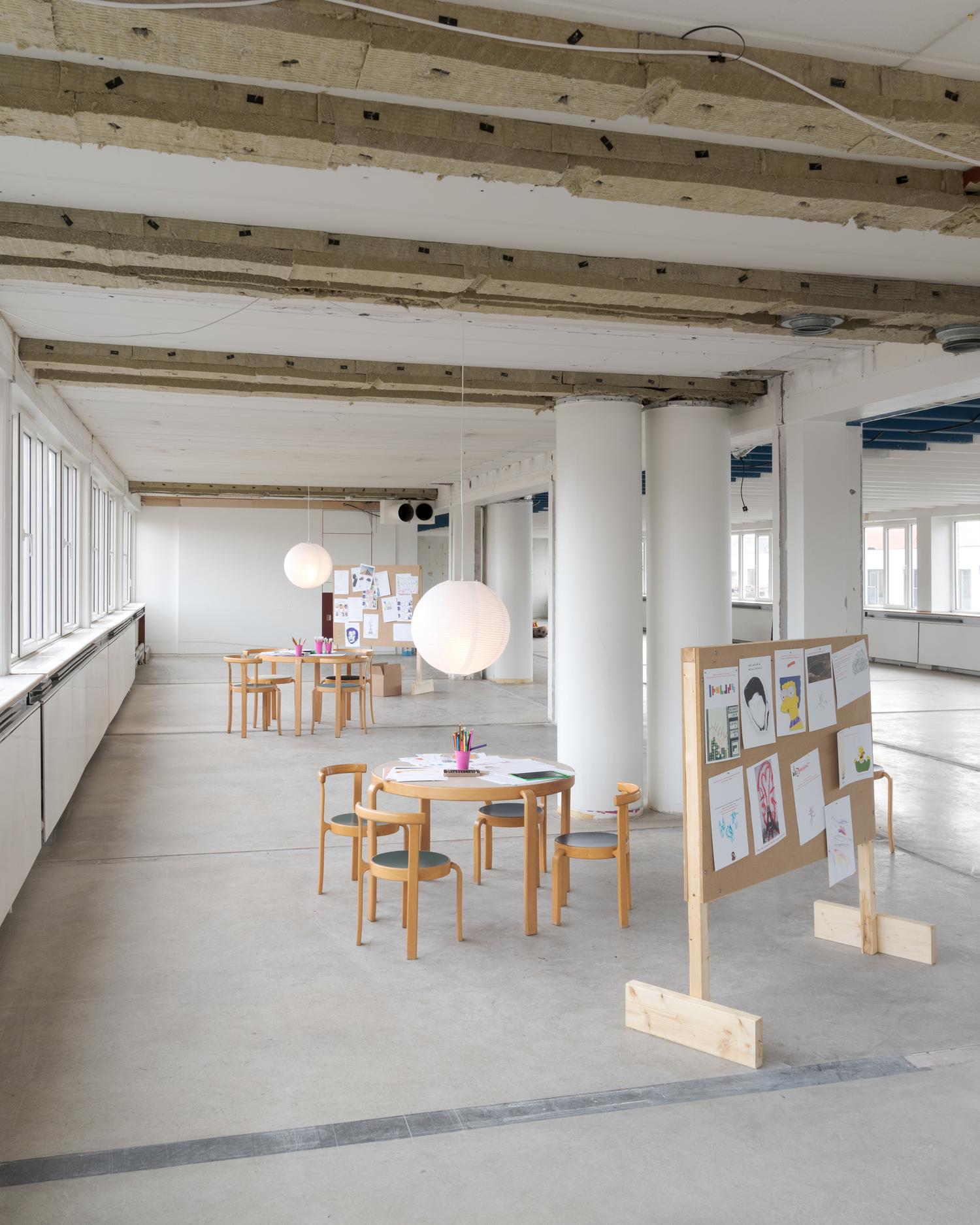
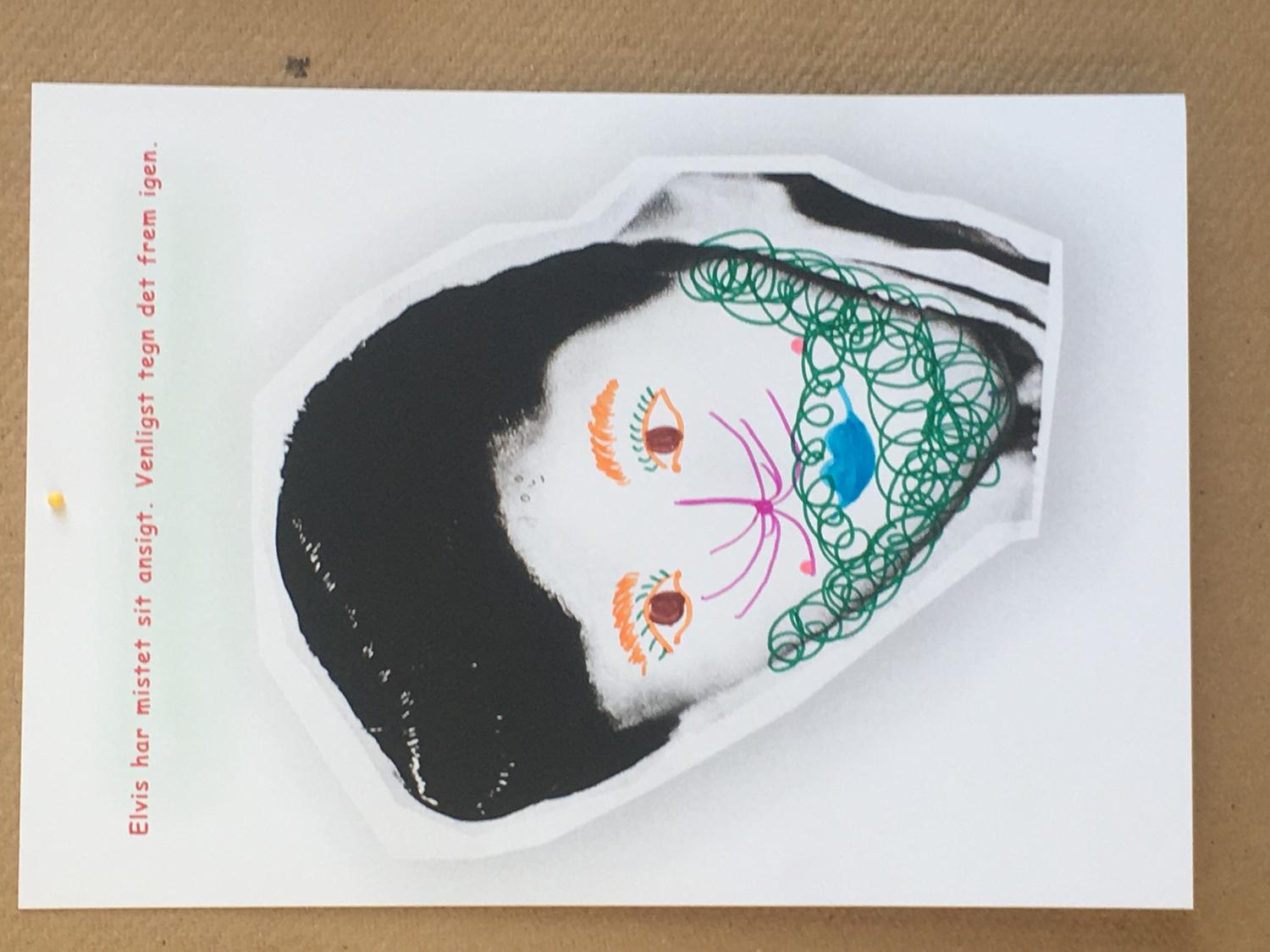




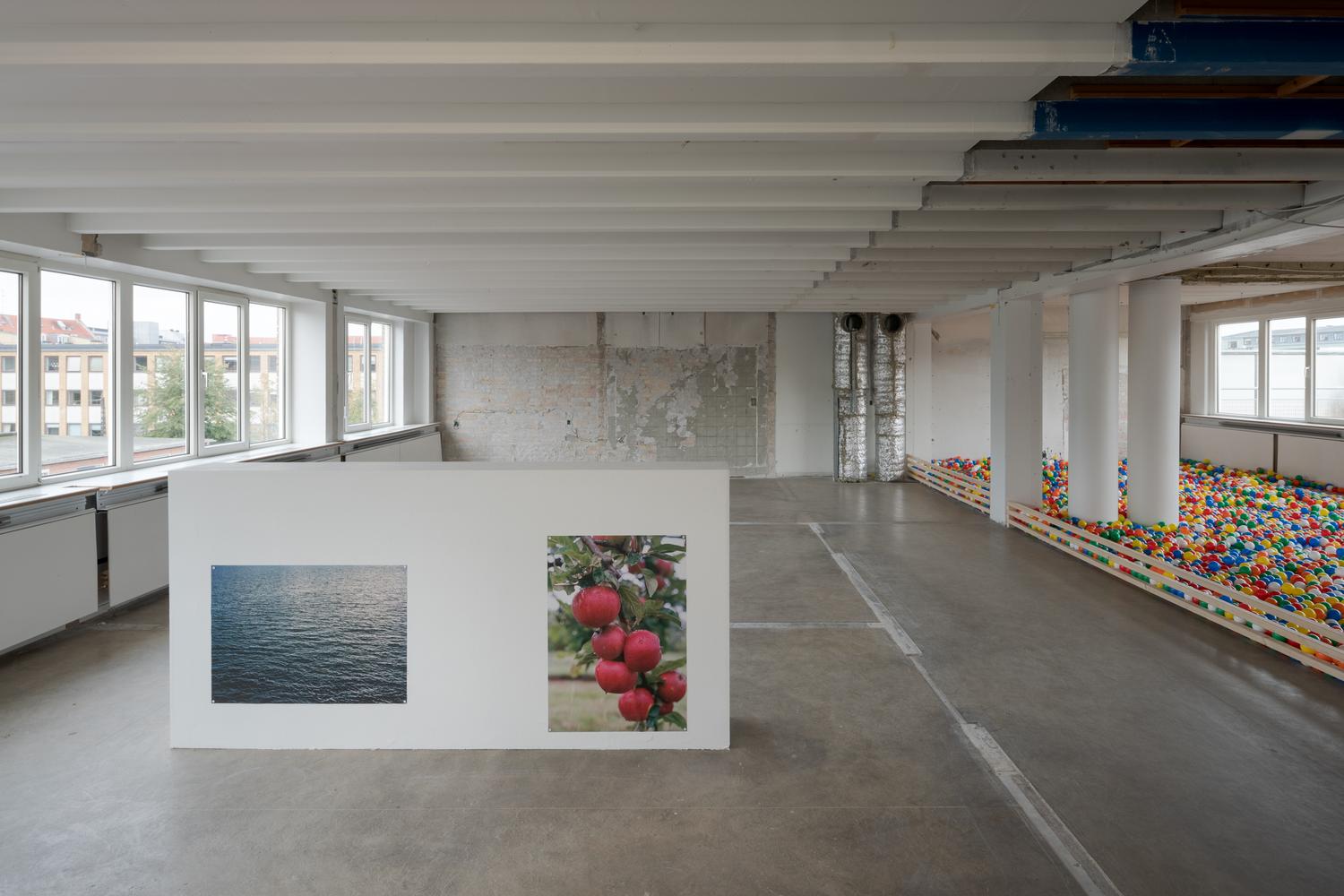



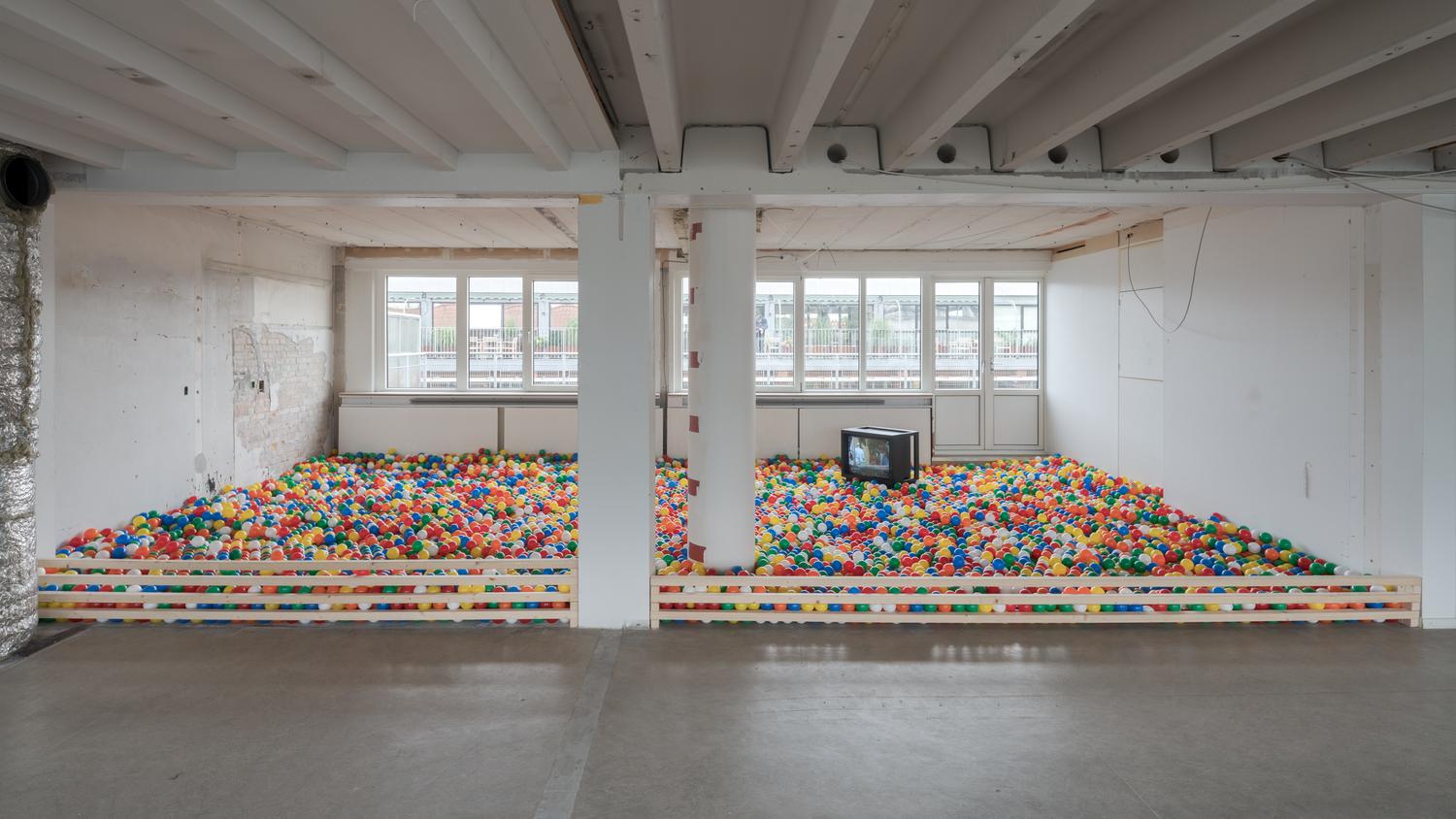 Photos by David Stjernholm
Photos by David Stjernholm